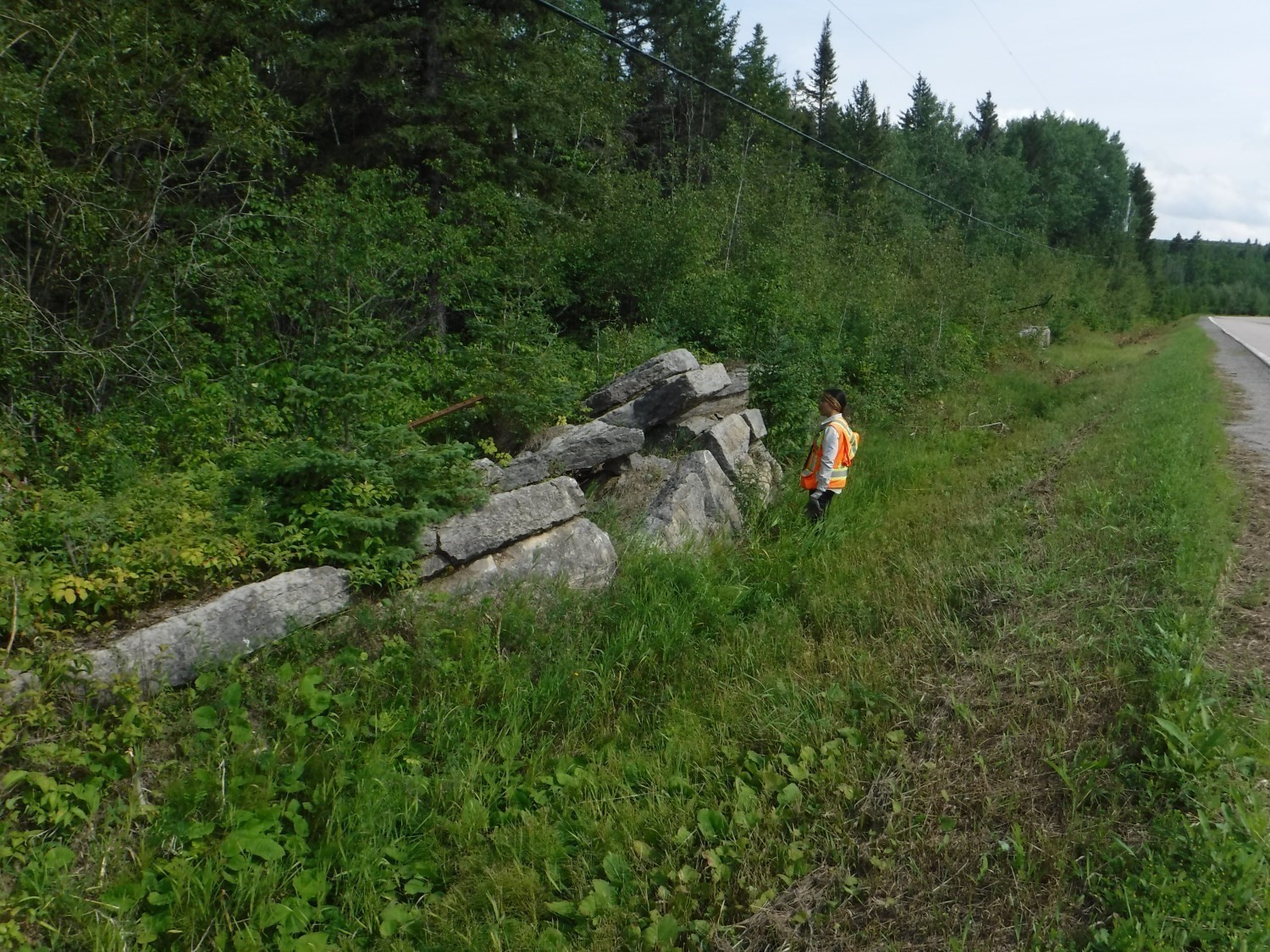
None
| Author: | Sinclair, 1953 |
| Age: | Upper Ordovician |
| Reference section: | Plourde Quarry (type locality) |
| Type area: | NW of Saguenay (NE corner of NTS sheets 22D06) |
| Geological province: | St. Lawrence Platform |
| Geological subdivision: | St. Lawrence Lowlands Platform |
| Lithology: | Conglomerate, sandstone, limestone |
| Type: | Lithostratigraphic |
| Rank: | Formation |
| Status: | Formal |
| Use: | Active |
- Trenton Group
- Tétreauville Formation
- Montréal Formation
- Neuville Formation
- Deschambault Formation
- Hull Formation
- Saint-Marc Formation
- Mile End Formation
- Ouareau Formation
- Fontaine Formation
- Pont-Rouge Formation
- Sainte-Anne Formation
- Galets Formation
- Shipshaw Formation
- Simard Formation
- Tremblay Formation
- René-Levasseur Formation
Background
The Upper Ordovician Tremblay Formation was introduced by Sinclair (1953) in the Lake Saint-Jean area. This formation belongs to the St. Lawrence Platform, which forms a slice in the Grenville Province. All Ordovician sedimentary rocks in this region were assigned to the Trenton Group by several authors from a chronostratigraphic perspective (e.g., Dresser and Denis, 1946; Sinclair, 1953). Other authors have done so on lithostratigraphic bases (Benoit and Valiquette, 1971; Harland et al., 1985, 1987). Instead, Desbiens and Lespérence (1989) proposed the creation of a new group for these rocks, but did not. Although spatial correlation between these Ordovician rocks in the Lake Saint-Jean area and those of the Trenton Group of the St. Lawrence Platform is not formally established, the Tremblay Formation is maintained in this group.
Description
The Tremblay Formation consists of conglomerate, sandstone and greyish limestone, bluish in altered surface. The base of the formation consists of ~1 m of weakly sorted conglomerate with no important stratification. Conglomerate is composed of subangular syenitic blocks. The block size can reach 80 cm, but does not exceed 20 cm on average. The conglomerate base is overlain by a 1.9 m thick horizon of coarse-grained calcareous sandstone, partly composed of low-cemented conglomeratic beds, approximately 15 cm thick. Approximately 1.2 m thick, the sommital part is similar, but cement is limestone and includes calcilutite lenses forming about 10% of the total (Desbiens and Lespérence, 1989). At the Niobec Mine in the Saint-Honoré area, the Tremblay Formation consists of regoliths with carbonatite blocks. For Lavoie and Asselin (1998), this formation is a siliciclastic unit composed of conglomerate, sandstone and siltsone. It represents a deposit with a dominant detritic fraction (regolith of the Grenvillian bedrock) combined with near-shore marine action such as that associated with tides (Harland et al., 1985).
In the Lake Saint-Jean area, the Tremblay Formation and the three other related formations (Galets, Shipshaw and Simard) cannot be mapped at the 1:50 000 scale because they are generally not more than 50 m thick and subhorizontal (<4° dip). On the geological map of the Saguenay–Lac-Saint-Jean region (sheets 32A08 and 22D), the Trenton Group is hence shown instead of these four related formations.
Thickness and Distribution
The thickness of the Tremblay Formation is approximately 4.5 m, of which 2.5 m is sandstone and 2 m is greyish limestone (Sinclair, 1953). In contrast, at the Plourde quarry, Desbiens and Lespérence (1989) reported 1 m of conglomerate at the base of this formation.
Dating
None.
Stratigraphic Relationship(s)
The Tremblay Formation unconformably overlies rocks of the Precambrian basement and is gradually overlain by the Simard Formation (Lavoie & Asselin, 1998).
The stratigraphic column shows the pile of the other three formations in relation to the Tremblay Formation in the section studied by Lavoie and Asselin (1998) in the Chambord area (NE corner of NTS sheet 32A08).
Paleontology
The Tremblay Formation contains fragments of trilobites (Asaphidia) and bivalves, as well as fragmented corals, bryozoa and brachiopods. According to Desbiens and Lespérence (1989), these fossiliferous fragments cannot be correlated with other related units (Galets, Shipshaw and Simard formations). According to them, the Tremblay Formation is of Upper Ordovician age (458 to 457 Ma).
References
Publications available through Sigéom Examine
BENOIT, F. W., VALIQUETTE, G. 1971. REGION DU LAC SAINT-JEAN (PARTIE SUD). MRN. RG 140, 29 pages and 5 plans.
DENIS, T. C., DRESSER, J A. 1946. LA GEOLOGIE DE QUEBEC – GEOLOGIE DESCRIPTIVE. MRN. RG 020-II, 731 pages and 4 plans.
Other publications
DESBIENS, S., LESPÉRENCE, P.J. 1989. Stratigraphy of the Ordovician of the Lac Saint-Jean and Chicoutimi outliers, Quebec. Canadian Journal of Earth Sciences; volume 26, pages 1185-1202. doi.org/10.1139/e89-101.
HARLAND, T.L., PICKERILLR, K., FILLION, D. 1985. Ordovician intracratonic sediments from the Lac-St-Jean and Chicoutimi areas, Quebec, eastern Canada. Canadian Journal of Earth Sciences; volume 22, pages 240 -255.doi.org/10.1139/e85-021.
HARLANDT, L., PICKERILL, R.K., FILLION, D. 1987. Establishment and development of patch reefs in the intracratonic Ordovician sequence near Chicoutimi, Quebec. Lethaia; volume 20, pages. 189-208.doi.org/10.1111/j.1502-3931.1987.tb02038.
LAVOIE, D., ASSELIN, E. 1998. Upper Ordovician facies in the Lac Saint-Jean outlier, Québec (eastern Canada): palaeoenvironmental significance for Late Ordovician oceanography. Sedimentology; volume 45, pages 817-832. doi.org/10.1046/j.1365-3091.1998.00170.x.
SINCLAIR, G.W. 1953. Middle Ordovician beds in the Saguenay Valley, Québec. American Journal of Sciences; volume 251, pages 841-854. doi.org/10.2475/ajs.251.12.841.

